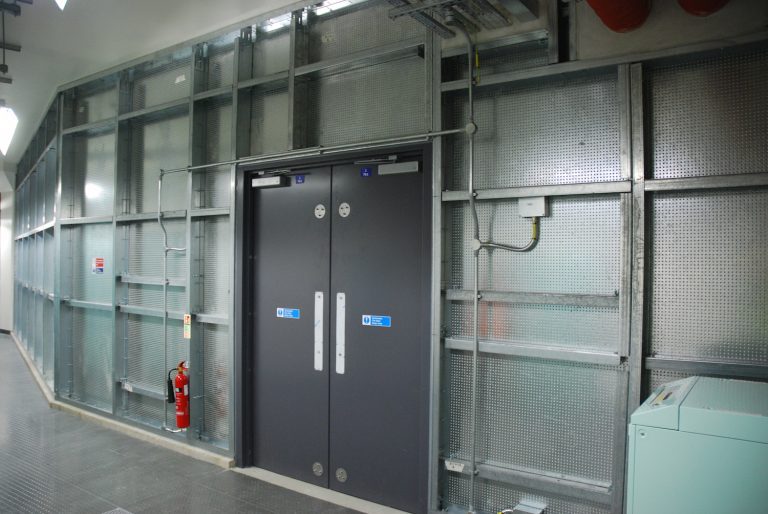When we think of concrete, we might think of its less elegant modern uses: brutalist architecture, bridges and paving slabs. Yet the material has proved itself one of mankind’s most enduring creations, surviving literally and figuratively for thousands of years. It continues to be one of the most popular choices for modern structures, and it’s not going away anytime soon. While concrete still holds the edge in price, though, it is steadily being superseded by more modern building materials. From steel and hempcrete to entirely new composites and materials, developers now have more viable materials to choose from than ever before. Here is a rundown of the benefits and drawbacks of concrete and steel, and the many pretenders to their thrones. Benefits of concrete If a technology can go missing for over a thousand years and still be heralded as revolutionary, it’s clearly doing something right. Concrete was first devised by the Ancient Egyptians and nearly perfected by the Romans, whose finest examples of concrete masonry still stand to this day. The Romans weren’t just the first civilisation to deploy concrete structures en masse around the world, either. They also struck upon a form on concrete that healed and strengthened itself, something that’s only just entering back into modern construction in a cost-effective way. Concrete remains the most widely used building material in the world by weight, and not without reason. The benefits of concrete include: Price Concrete is still seen as the cheapest material for large builds, although this often only accounts for the price of the material, and not the process of installing it. Using concrete can save on property insurance, while its price has always remained stable compared to other materials, whose production tends to fluctuate. This said, there are increasing reports that the sand used in the most popular forms of concrete is running out, making this a more pressing issue. Safety Concrete is seen as a structurally reliable material, with a high tensile strength and natural fire resistant properties. Its weight, mass and strength allow it to resist most impacts, as well as winds of up to 200 mph. Thick concrete casing is routinely used by even the most high cost and safety conscious builds, including the new ‘Freedom Tower’ at 1 World Trade Centre. Design While unadorned and facade-free concrete can be considered an eyesore, it’s also been used in many iconic and beautiful constructions, from the Roman Pantheon to Frank Lloyd Wright’s Fallingwater, concrete can be used in a number of beautiful ways. Part of this is the ability to pour it into all different kinds of shapes, which has led to myriad creative, cascading designs. Benefits of steel Traditionally the preserve of tall buildings and large projects, steel has a reputation as being sturdy but slow when it comes to deployments. This is an increasingly dated attitude, however, and many of the traditional caveats of steel construction have been overcome with newer designs and methods. Some of the chief benefits are: Flexibility This is a literal benefit as well as a metaphorical one. Steel is much more ductile than concrete – in other words, less rigid – making it more appropriate for earthquake-prone and windy regions. It also has the highest strength-to-weight ratio of any popular building material, making it the primary choice for high rises as well as long, column-free spans. While it doesn’t offer as many opportunities for visual flourishes, it does facilitate a wide variety of flexible designs. Availability We’re running out of concrete. This isn’t scaremongering, just a fact of natural resources. Modern concrete – the kind known as Portland cement – relies on a particularly course kind of sand that’s proving to be in limited supply. Sustaining the world’s demand for concrete has led to widespread destruction of habitats, and that demand is still outstripping supply. While structural steel supplies can fluctuate, there is currently a large surplus, and the material is also recyclable. Efficiency It’s often said that the ‘two day cycle’ of concrete installation makes it the fastest means to build a structure. What this fails to account for is the many contributory factors in a quick build, and the ways in which steel can be deployed. Structural steel framing systems can now be built to spec using CAD software, reducing installation time by as much as 50%. It is also far less labour intensive than concrete, which requires an enormous amount of manpower for larger projects. Application Steel’s versatility renders it indispensable across numerous applications, spanning from residential to commercial and agricultural domains. In the residential sector, steel finds utility in various structural components like beams, columns, and frames. Its robustness ensures structural integrity, providing safety and longevity to buildings. Additionally, steel’s adaptability enables architects and designers to explore innovative construction techniques, resulting in modern and aesthetically pleasing residential structures. Within the realm of commercial establishments, steel serves as a cornerstone for constructing offices, warehouses, and retail spaces. Its inherent strength makes it applicable in vast open spaces without the need for cumbersome support columns, thus maximizing usable floor area. Moreover, steel’s ability to withstand heavy loads and adverse environmental conditions makes it ideal for commercial structures requiring durability and resilience. In agricultural settings, steel plays a crucial role in the construction of barns, storage facilities, and other farm buildings. Steel barns offer several advantages, including ease of assembly, durability, and customizable designs to accommodate various farming needs. Their resilience against harsh weather conditions and pests ensures the protection of valuable livestock, equipment, and produce, contributing to the efficiency and success of agricultural operations. Furthermore, steel’s sustainability credentials make it an environmentally conscious choice across all applications. Its high recyclability reduces carbon footprint and minimizes waste, aligning with modern sustainability goals. Additionally, steel structures can incorporate energy-efficient features, promoting sustainable construction. Alternative materials While concrete and steel continue to form the core of building design, scientists are always looking to augment these materials. New composites and designs can enhance many of the key









